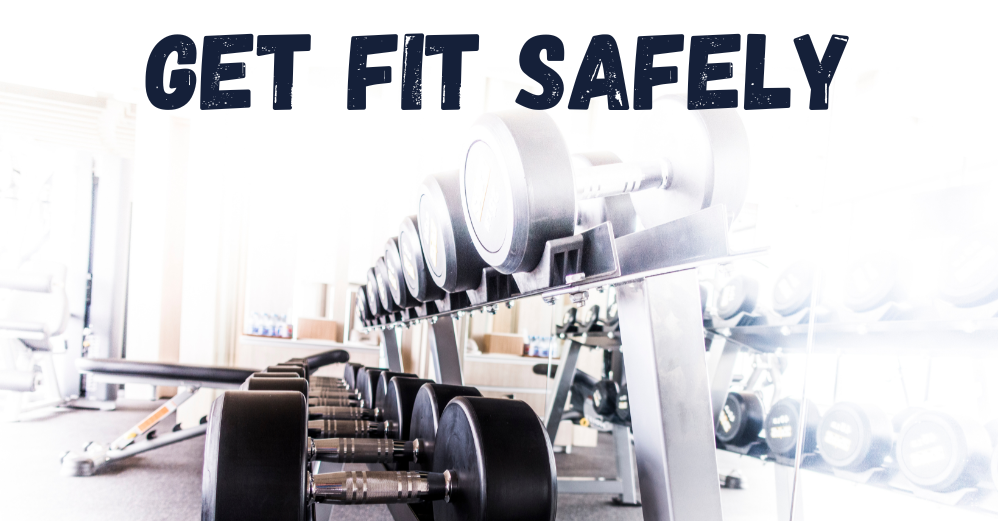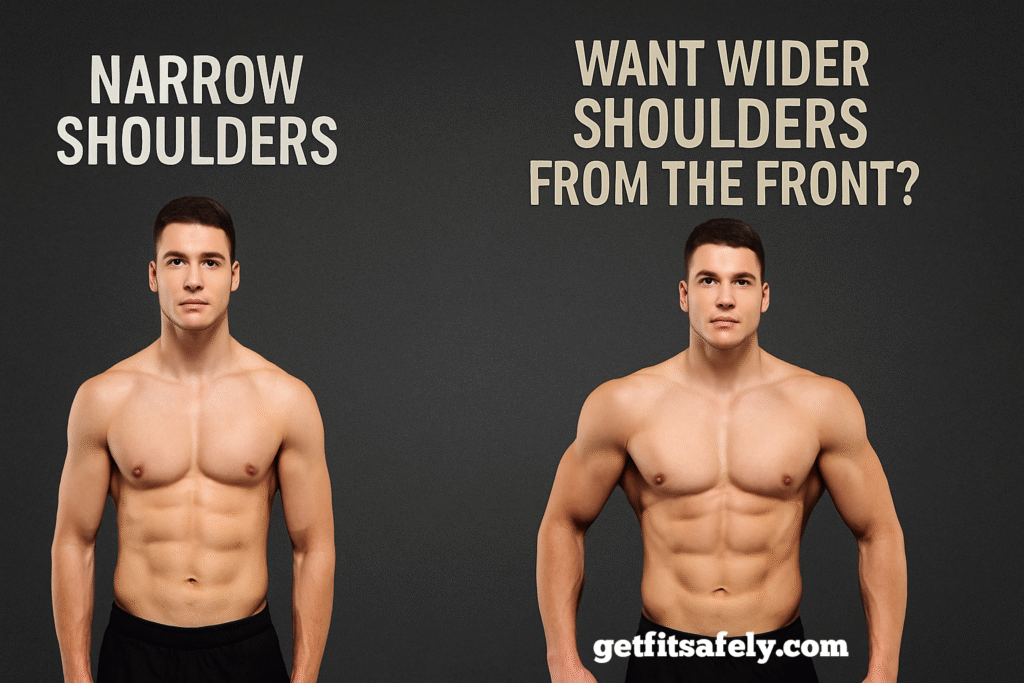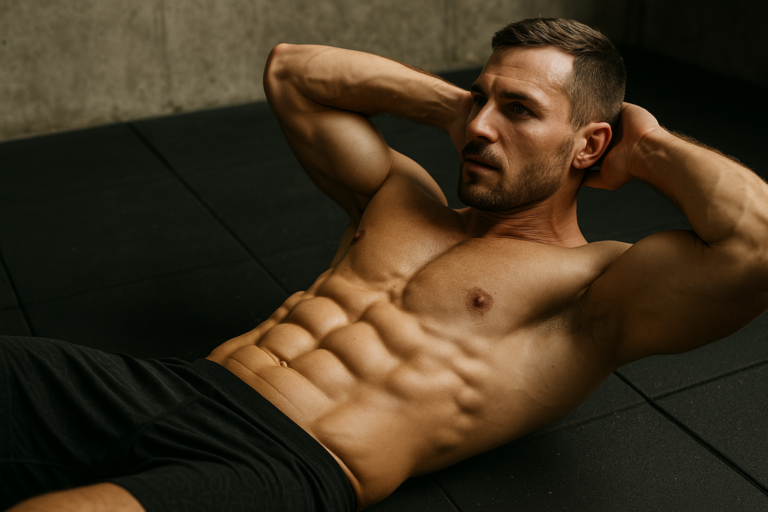I admit it without shame:
For years I had the classic “Instagram profile shoulders.”
But when I looked at myself from the front… all the size just vanished.
Are you in the same boat?
Relax, we’ve all been there.
The good news is you can fix it.
And you don’t need to become a bodybuilder or live in the gym.
The Role of Front Deltoids in Frontal Width
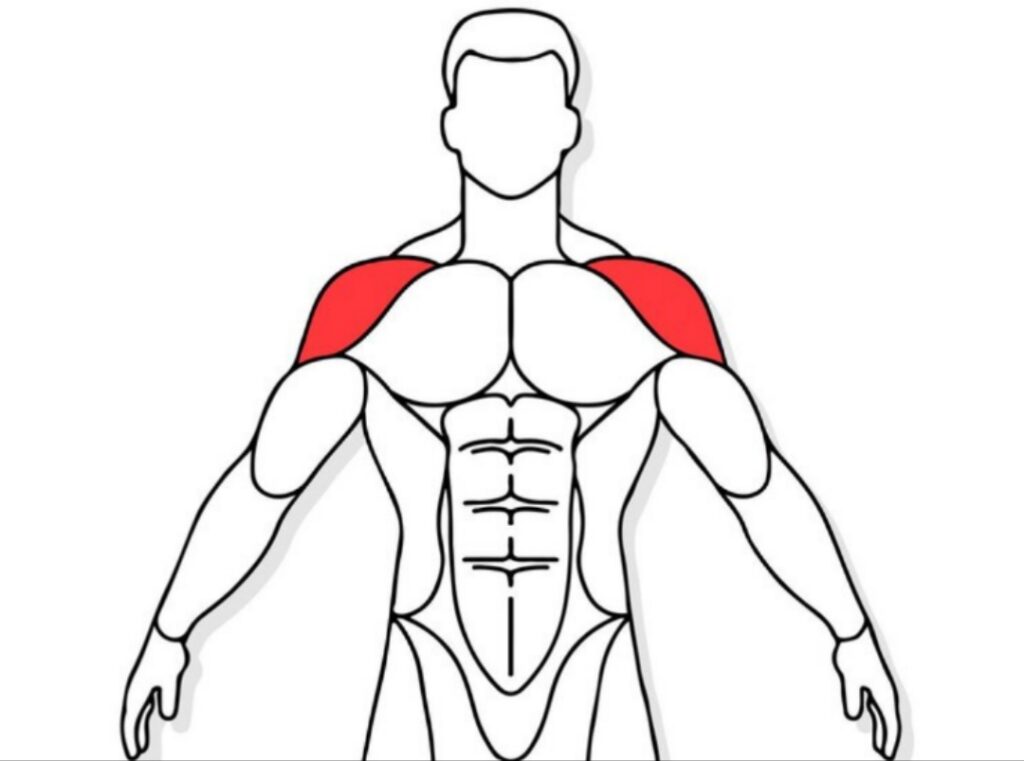
Front deltoids are the muscles sitting right above your chest, at the front of your shoulder.
Visually, they’re the first thing you notice when you look at someone head-on.
So yes: they definitely contribute to the shoulder’s frontal appearance, especially across the upper chest.
But beware: they’re not what makes you look “wide” from the front.
That’s always the job of the lateral deltoid.
The front delts add thickness and volume to the front, helping to create a round, full, three-dimensional shoulder.
That’s why you should train them—but without overdoing it.
Why They Are Often Overtrained (Without You Realizing It)
The problem?
Many people overtrain them unintentionally.
Every time you do:
- Bench press
- Incline bench press
- Parallel-bar dips
- Push-ups
- Arnold presses
- Military presses
…your front delts are working, often more than necessary.
That’s why so many have overdeveloped fronts but neglected lateral and rear delts.
This creates a visual imbalance: “closed” shoulders, overly front-heavy, and lacking width.
Plus, dominant front delts can pull your shoulders forward and worsen posture, making you look narrower—even if you’re more muscular!
How to Train the Front Deltoids Strategically
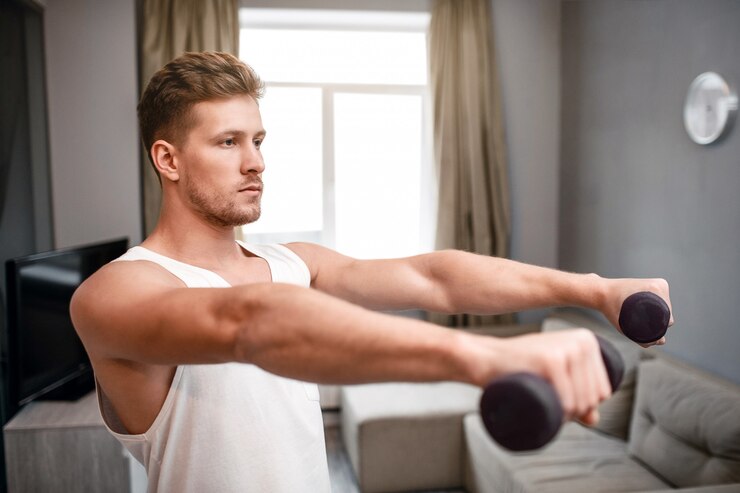
I’m not saying ignore them.
Far from it.
I’m saying train them with strategy.
Here’s how:
- Avoid heavy vertical presses too frequently, like military presses three times a week.
- Prioritize multi-joint movements such as push presses or incline bench presses, which recruit multiple muscle groups.
- If you want to isolate them, use light, technical sets, for example:
- Single-Dumbbell Front Raise (Hammer Grip)
Hold one dumbbell in a neutral grip (palm facing inward).
With your arm straight, lift to eye level.
Move slowly and under control, avoiding torso swing.
Focus on pressing with the deltoid, not the traps. - Landmine Press (Unilateral or Two-Handed)
Anchor one end of the barbell in a corner or holder.
Start with your hand at shoulder height, press the barbell up and slightly forward.
Control the descent and avoid locking out the elbow at the top.
Keep your core stable and movement fluid—a great way to protect the shoulder while targeting the front delts. - Overhead Plate Raise (Controlled, Slow, No Swing)
Hold a weight plate horizontally with both hands, arms extended in front.
Raise the plate overhead, keeping your arms nearly straight, then lower under control.
Use a moderate load: here, tension and fluidity are key, not raw strength.
- Single-Dumbbell Front Raise (Hammer Grip)
A good rule of thumb: one session of front-delt isolation per week is more than enough for most people.
You’re already getting plenty of volume from all the other exercises.
The Real Secret? Visual and Functional Balance
Too much front delt development:
- Rounded posture
- Closed-in shoulders
Neglected lateral delts:
- No real width
Weak rear delts:
- Zero scapular support
- Higher injury risk
Conclusion?
Don’t eliminate front delts from your program—integrate them intelligently into a complete plan.
Only then will you get:
- Shoulders that look wide from the front
- A three-dimensional shape
- A posture reminiscent of a Greek statue (or at least a serious athlete)
- And none of the annoying pain from asymmetric overload
Width Is a Matter of Illusion (and Precision)
Let’s start here:
We’re not talking about getting huge.
We’re talking about presence.
You know that feeling of taking up more space without saying a word?
That V-shape that makes you look more athletic, more proportioned, more… dominant?
And no, doing just one military press every Monday morning won’t get you there.
Because the truth is most people overtrain their front delts and completely forget the lateral delts—which are the ones that make you look wider when you’re facing someone.
Yes, those little devils on the side of your humerus that give you hell during sloppy lateral raises.
But they’re the secret to looking like a beast even when you’re standing still.
The Lateral Deltoid: Your Upper Body’s Hidden Thunder
Imagine wearing invisible shoulder pads sewn right into your flesh.
That’s the effect of a well-developed lateral deltoid.
This muscle primarily abducts the arm, and it is by far the biggest contributor to your visual width.
But it doesn’t grow on pats on the back.
The lateral delt is a diva:
- It doesn’t like heavy loads
- It hates being overlooked
- If you don’t isolate it properly… it goes on strike
You need precision.
Technique.
Time under tension.
And the right dose of madness to endure the burn that feels like you’re orbiting Earth.
Common Mistakes (I’ve Made Them All)
Be honest.
You grabbed two dumbbells, stood in front of the mirror, did lateral raises by shrugging your shoulders, and moved on.
Three sets of 12, then next exercise.
Too bad you trained your traps more than your delts.
I spent months “doing” lateral raises without actually activating the target muscle.
For the lateral delt you need:
- Slowness
- Isolation
- Proper angle
When you feel it burning like you’re lifting a water bottle with a dislocated shoulder…
You know you’re on the right track.
Truly Effective Exercises (Those That Really Work)
Here are my favorites—and trust me, they didn’t make the cut by accident. I tested each one with blood (okay, sweat), tears, and brutal self-critique.
- Dumbbell Lateral Raises (Done Right)
Slight forward lean, elbows slightly bent, lift with the elbow, not the hand, stopping just above shoulder height. - Cable Lateral Raises
Constant tension, one shoulder at a time, no cheating—just good pain. - Seated Lateral Raises
No torso swing, no momentum—pure delt work. - Lean-Away Lateral Raises (from Low Cable)
Lean sideways holding the cable column, maximizing stretch and pump for brutal 40-second sets. - Wide-Grip Upright Rows
Avoid narrow grip (which hits traps too much). Wide grip, elbows high, medium-low load.
And from the Front, Does It Work? Yes, But With an Addition
The lateral delts are the heart of width, but if you have:
- Rounded posture
- Overactive traps
- Tight chest
…you’ll never look wide.
You need balance.
You need to open your shoulders.
You need to strengthen your rear delts and postural muscles.
Add these to your weekly routine:
- Face Pulls
Use a rope, moderate weight, slow movement, pulling toward your face with wide elbows. - Reverse Flyes (Cable or Pec Deck)
Keep your torso upright, control the movement, squeeze the rear delts. - Band Pull-Aparts
Perfect for pre-workout activation or daily morning resets to improve posture.
Attention: Without Nutrition and Recovery, Nothing Grows
You can do lateral raises every day until doomsday…
But if you don’t eat enough protein, don’t sleep, don’t recover,
Your body will cruelly ignore your efforts in the name of homeostasis.
Delts are small, yes.
But they still need fuel.
And if you’re in a calorie deficit (or even maintenance),
Your body says, “We’ve got just enough energy to survive… who cares about shoulder growth?”
So what happens?
Zero growth.
At best, a slow recomposition.
If you want noticeable results—those that make a difference under a tight shirt—
You need a calorie surplus.
Not like an offseason bodybuilder binge, but you must:
- Eat enough carbs to support volume and muscle recovery (or your glycogen and pump vanish).
- Aim for at least 1.6–2 g of protein per kg of bodyweight to supply the bricks for new muscle.
- Get at least 7 real hours of sleep (no Netflix in bed, no TikTok binges).
- Drink water like you’re crossing the Sahara—hydration affects cell volume, performance, and yes, pump.
Remember, muscle doesn’t grow in the gym.
That’s where you destroy it.
It grows when you rest, eat, and sleep properly.
So if your shoulders aren’t budging, check your plate.
That might be the real blocker.
The Biomechanics of Width: Why Some Look Wider Even Without Being Big
Ever notice certain people look broad-shouldered even if they’re not especially muscular?
It’s not magic. It’s skeletal structure and posture.
People with long clavicles have a natural advantage: the distance between delts is greater, so they look wider even without huge muscles.
But those with shorter clavicles can compensate by:
- Training muscles that project laterally (lateral delts, long head of the triceps, upper lats).
- Improving scapular posture, keeping shoulders open, scapulae depressed and slightly retracted.
- Avoiding keeping elbows glued to the sides when walking—your movement pattern also sends a message of openness or closure.
Yes, the body is a visual system. Every detail counts.
The Role of the Latissimus Dorsi in Frontal Width (Spoiler: It Helps More Than You Think)
Wait, isn’t the lat just for back width?
Partly yes… but also no.
A broad, well-developed back creates a wider base for your shoulders.
When you train lats with wide pull-ups, lat pulldowns, rows with full contraction, you’re building a “cape” that supports your frontal width.
Above all, the lats also improve posture and chest expansion.
The more open you are frontally, the wider your shoulders appear—even if the tape measure doesn’t change.
It’s a biomechanical optical trick. And it works.
Watch Your Mobility: The Silent Enemy of Width
Everyone wants to widen.
Few worry about having the room to widen.
If you have tightness in:
- Pectoralis minor
- Front deltoids
- Anterior shoulder capsule
- Overactive upper traps
…you risk a closed posture even with muscle mass.
You end up looking narrow.
Include in your warm-up:
- Thoracic mobility (foam-roller extensions)
- Active chest stretches (e.g., doorway stretch)
- Shoulder mobilizations with a stick or band
And every now and then, treat yourself to a session with a manual therapist or skilled physiotherapist.
Joint freedom is a powerful aesthetic multiplier.
Training Shoulders at High Frequency: Yes, But With Intelligence
Shoulders, especially lateral delts, respond well to frequent stimulus:
They’re used in almost every upper-body movement.
Training them two or even three times a week is not only possible—it’s recommended if you manage volume and intensity.
Here’s an effective example plan:
- Day 1: Technical Volume
Controlled sets, slow movement, perfect isolation (e.g., cable raises 4×15 slow).
No need to explode—feel the muscle from start to finish. - Day 2: Pump and Burn
Supersets, drop-sets, high time under tension (e.g., 21s lateral raises or triple drop-sets).
You can take some sets to technical failure—no cheating, true form only. - Day 3: Postural Focus and Activation
Band pull-aparts, face pulls, posture drills—perfect even on leg day or active rest.
No failure here, just precision and quality.
Remember: if you feel joint pain instead of muscle fatigue…
You’re doing something wrong.
Technique > weight. Always.
And use failure intelligently, not as a badge of honor.
The Final Aesthetic Touch: Arms Matter Too (But Strategically)
Surprisingly, arms that are too big relative to shoulders can make shoulders look narrower.
Especially if you have dominant biceps and under-developed lateral triceps.
How to fix it?
- Develop the long head of the triceps with skullcrushers, French presses, and overhead rope pushdowns.
- Avoid biceps-only pump sessions. Train the back of the arm like a volume artist.
- Make sure your arms “frame” outward, enhancing the sense of shoulder width rather than sabotaging it.
Conclusion
It’s not about extreme volume.
It’s about shape.
Angles.
Visual presence.
Want to look wider from the front?
Then break the bro-standard workout loop.
Focus on isolation.
Prioritize lateral delts.
Fix your posture.
Balance the rear.
And stay consistent—no visual change happens in two weeks.
But when it does…
Oh, brother, you’ll notice.
And so will everyone around you.
Now go.
Ignite those shoulders.
And conquer that mirror.

